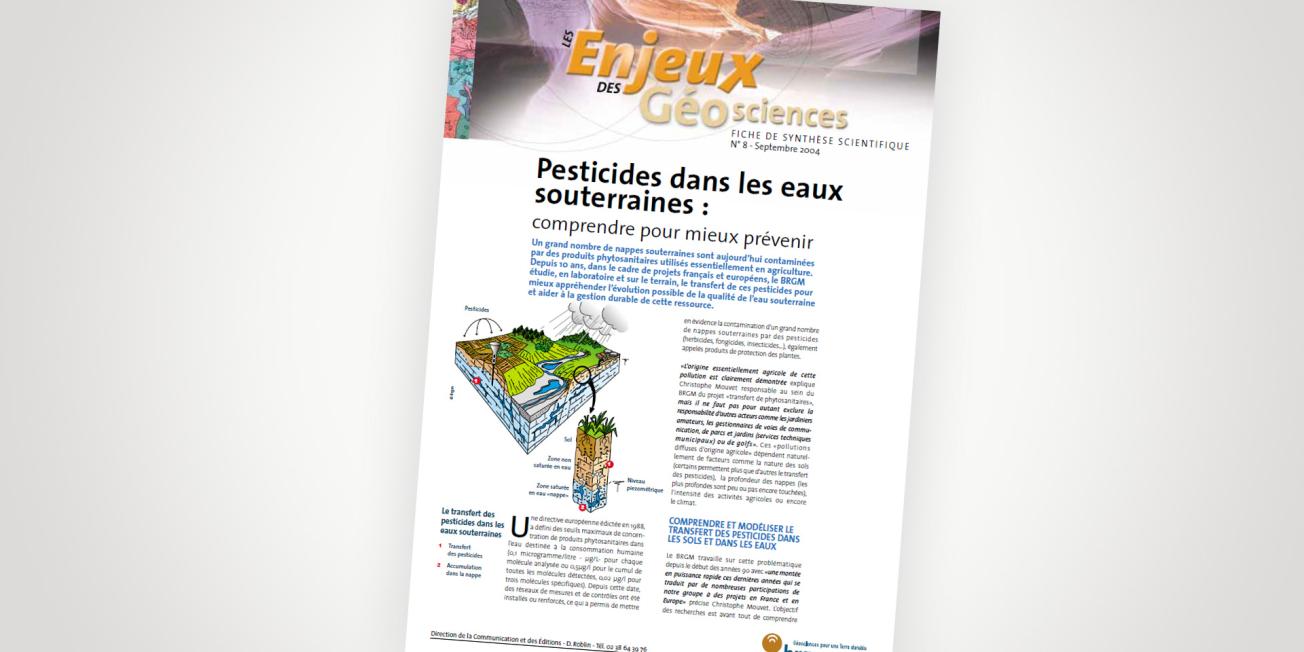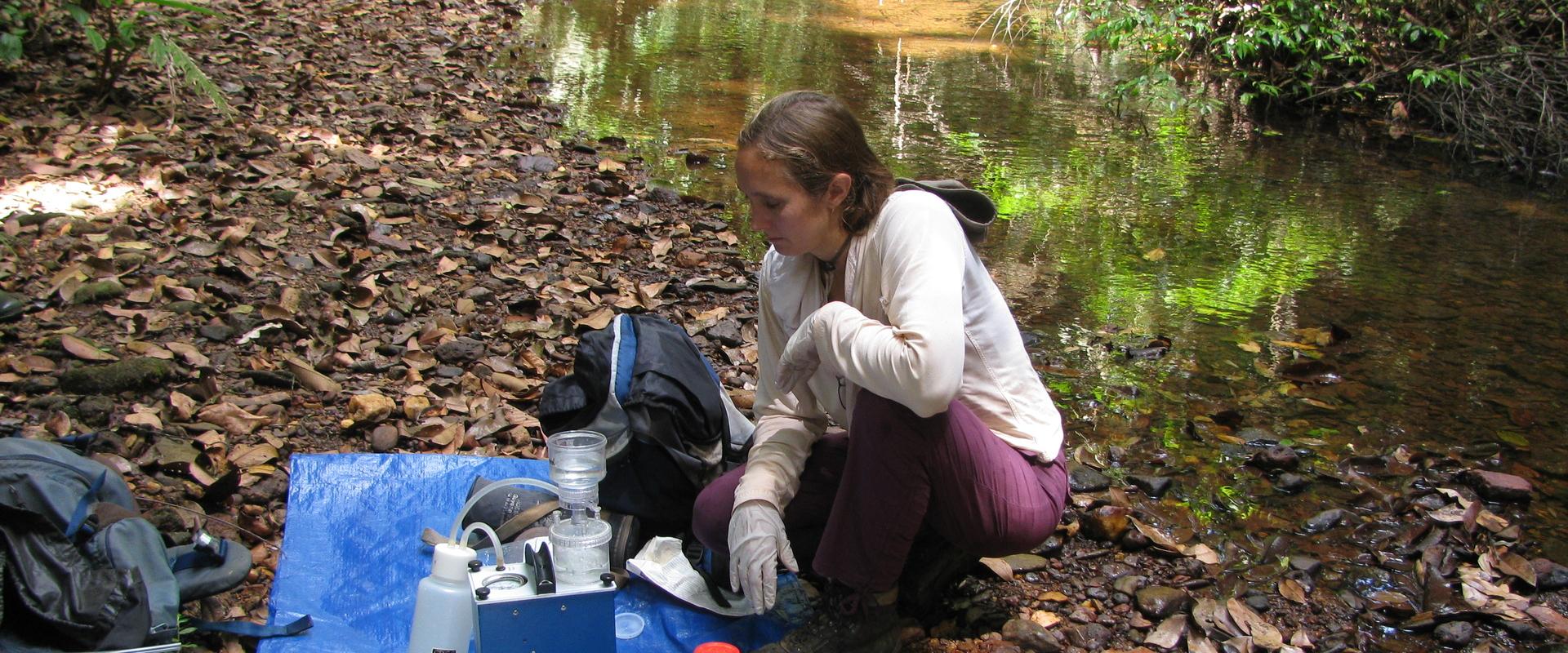
Cover of the thematic file.
© BRGM
Improving understanding for better prevention
A European directive issued in 1988 defined maximum concentration thresholds for plant protection products in drinking water (0.1 microgram/litre – µg/L – for each compound analysed or 0.5g/L for all specific compounds combined). Since that date, measurement and control networks have been set up or reinforced and have revealed the contamination of a large number of groundwater bodies by pesticides (herbicides, fungicides, insecticides, etc.), also known as plant protection products.
This "diffuse pollution from agricultural sources" naturally depends on factors such as soil type (some types allow more pesticide transfer than others), the depth of the water table (the deepest layers are little or not yet affected), the intensity of agricultural activities, and the climate.







